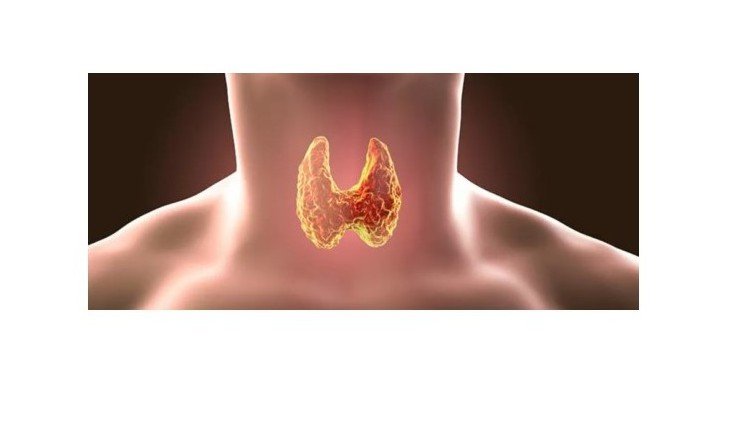In this short course we will understand what is thyroid dysfunction and diagnosis of thyroid dysfunction, how it presents and all modalities of treatment.
اضطرابات الغدة الدرقية من الأمراض المشهورة جدا تتراوح من زيادة نشاط الغدة الى كسل الغدة، سنناقش كيفية تصنيع هرمون الغدة الدرقية و ما هي الاضطرابات الناتجة من خلل عمل الغدة و كيفية تشخيصها و علاجها
1- مقدمة (Introduction)
2- تشخيص زيادة نشاط الغدة و كسل الغدة (Hyperthyroidism and Hypothyroidism)
3- أعراض اضطرابات الغدة الدرقية (Presentation)
4- تصنيع هرمون الغدة الدرقية (Synthesis of thyroid hormone)
5- علاج أمراض الغدة الدرقية (Thyroid pharmacology)
The thyroid is a small, butterfly-shaped gland located at the base of your neck just below the Adam’s apple. It’s part of an intricate network of glands called the endocrine system. The endocrine system is responsible for coordinating many of your body’s activities. The thyroid gland manufactures hormones that regulate your body’s metabolism.
Several different disorders can arise when your thyroid produces too much hormone (hyperthyroidism) or not enough (hypothyroidism).
Four common disorders of the thyroid are Hashimoto’s thyroiditis, Graves’ disease, goiter, and thyroid nodules.
Hyperthyroidism
In hyperthyroidism, the thyroid gland is overactive. It produces too much of its hormone. Hyperthyroidism affects about 1 percent of women. It’s less common in men.
Graves’ disease is the most common cause of hyperthyroidism, affecting about 70 percent of people with an overactive thyroid. Nodules on the thyroid — a condition called toxic nodular goiter or multinodular goiter — can also cause the gland to overproduce its hormones.
Excessive thyroid hormone production leads to symptoms such as:
-
restlessness
-
nervousness
-
racing heart
-
irritability
-
increased sweating
-
shaking
-
anxiety
-
trouble sleeping
-
thin skin
-
brittle hair and nails
-
muscle weakness
-
weight loss
-
bulging eyes (in Graves’ disease)
Hyperthyroidism diagnosis and treatment
A blood test measures levels of thyroid hormone (thyroxine, or T4) and thyroid-stimulating hormone (TSH) in your blood. The pituitary gland releases TSH to stimulate the thyroid to produce its hormones. High thyroxine and low TSH levels indicate that your thyroid gland is overactive.
Your doctor might also give you radioactive iodine by mouth or as an injection, and then measure how much of it your thyroid gland takes up. Your thyroid takes in iodine to produce its hormones. Taking in a lot of radioactive iodine is a sign that your thyroid is overactive. The low level of radioactivity resolves quickly and isn’t dangerous for most people.
Treatments for hyperthyroidism destroy the thyroid gland or block it from producing its hormones.
-
Antithyroid drugs such as methimazole (Tapazole) prevent the thyroid from producing its hormones.
-
A large dose of radioactive iodine damages the thyroid gland. You take it as a pill by mouth. As your thyroid gland takes in iodine, it also pulls in the radioactive iodine, which damages the gland.
-
Surgery can be performed to remove your thyroid gland.
If you have radioactive iodine treatment or surgery that destroys your thyroid gland, you will develop hypothyroidism and need to take thyroid hormone daily.
Hypothyroidism
Hypothyroidism is the opposite of hyperthyroidism. The thyroid gland is underactive, and it can’t produce enough of its hormones.
Hypothyroidism is often caused by Hashimoto’s thyroiditis, surgery to remove the thyroid gland, or damage from radiation treatment. In the United States, it affects around 4.6 percent of people 12 years old and older. Most cases of hypothyroidism are mild.
Too little thyroid hormone production leads to symptoms such as:
-
fatigue
-
dry skin
-
increased sensitivity to cold
-
memory problems
-
constipation
-
depression
-
weight gain
-
weakness
-
slow heart rate
-
coma
Hypothyroidism diagnosis and treatment
Your doctor will perform blood tests to measure your TSH and thyroid hormone levels. A high TSH level and low thyroxine level could mean that your thyroid is underactive. These levels could also indicate that your pituitary gland is releasing more TSH to try to stimulate the thyroid gland to make its hormone.
The main treatment for hypothyroidism is to take thyroid hormone pills. It’s important to get the dose right, because taking too much thyroid hormone can cause symptoms of hyperthyroidism













